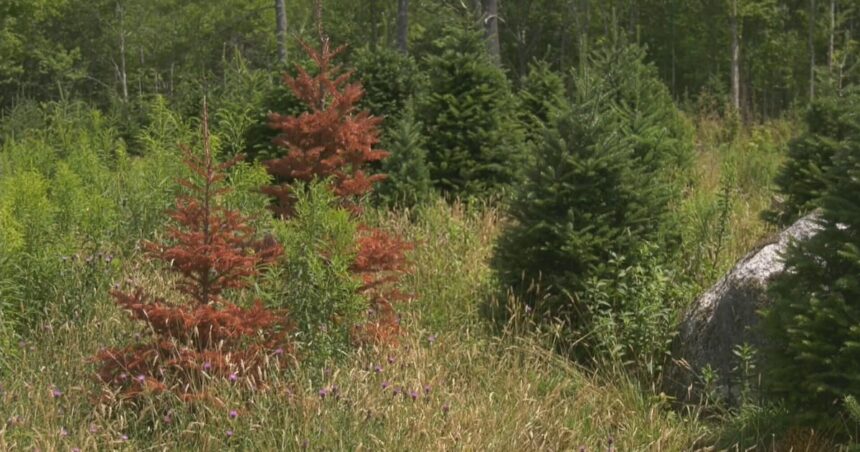A silent invader is wreaking havoc across Nova Scotia’s iconic Christmas tree farms, endangering a cherished holiday tradition and threatening a crucial pillar of the province’s rural economy. Phytophthora root rot, an aggressive soil-borne disease, has emerged as a formidable threat to the province’s balsam fir industry, with industry leaders warning of potentially devastating consequences if the spread continues unchecked.
“We’ve lost entire sections of production fields that were once thriving,” explains Richard Levy, a third-generation Christmas tree farmer from Lunenburg County. “This disease doesn’t just kill individual trees—it can render entire growing areas unusable for decades.”
The disease, which attacks the root systems of balsam firs, has been detected across multiple counties in Nova Scotia, where the Christmas tree industry generates approximately $52 million annually and supports over 4,000 seasonal and full-time jobs. According to the Nova Scotia Christmas Tree Council, exports to the United States, Caribbean, and beyond typically exceed 1.2 million trees each year.
Dr. Suzanne Barber, a plant pathologist at Dalhousie University’s Agricultural Campus, describes the challenge in stark terms: “What makes Phytophthora particularly troublesome is its persistence in soil. Once established, spores can remain viable for up to 30 years, creating long-term management challenges for growers.”
Research indicates the disease thrives in poorly drained soils and spreads more aggressively during periods of excessive rainfall—conditions that climate change models predict will become increasingly common in Atlantic Canada. The pathogen can spread through contaminated soil, water runoff, and even on equipment moved between fields.
Provincial authorities have launched a coordinated response effort, allocating $2.3 million toward research initiatives and support programs for affected growers. These include developing resistant balsam fir varieties and implementing enhanced drainage systems in vulnerable areas.
“We’re racing against time,” notes Emily Crawford, spokesperson for the Department of Agriculture. “This isn’t just about preserving holiday traditions—it’s about protecting a vital rural industry that sustains communities throughout the province.”
Some farmers have begun experimenting with alternative species like Fraser fir, which shows greater resistance to the disease. However, transitioning to new varieties requires significant investment and several years before trees reach marketable size.
For consumers, the immediate impact may be subtle—perhaps slightly higher prices or reduced availability of certain premium-grade trees. However, industry experts warn that without effective containment strategies, the long-term consequences could be far more significant for both local economies and holiday traditions.
Community initiatives have emerged to support affected growers, including a “Choose Nova Scotia” campaign encouraging consumers to purchase locally grown trees despite potential cosmetic imperfections that don’t affect quality.
As the province’s Christmas tree industry confronts this biological threat, the question remains: can scientific innovation and community resilience preserve this cherished holiday tradition for future generations, or will climate change and evolving pathogens fundamentally transform Nova Scotia’s festive landscape?























